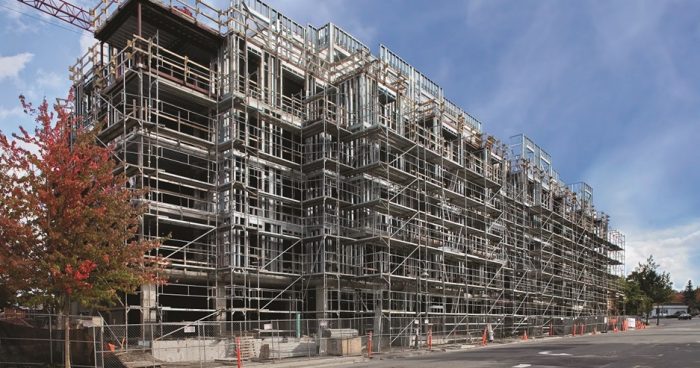AISI Publishes Two New Cold-Formed Steel Research Reports

WASHINGTON, D.C. – The American Iron and Steel Institute (AISI) has published two new cold-formed steel research reports: 1) “RP19-3: Direct Strength Prediction of Purlins with Paired Torsion Bracing,” and 2) “RP20-1: Inelastic Lateral-Torsional Buckling Strength Validation for Non-Principal Axis Bending Using Numerical Methods.” Both are available for free download at https://www.buildusingsteel.org.
The research reports resulted from projects awarded through AISI’s Small Project Fellowship Program, which provides a streamlined mechanism for AISI’s standards development committees (the Committee on Specifications and the Committee on Framing Standards), industry stakeholders, academics and students to collaborate on relatively short-term, highly focused, and mutually beneficial projects. Project selections are awarded based on their potential for long-term impact on the industry; steel industry engagement and co-funding; academic involvement and mentoring; and results for the AISI standards development committees, the student, and the academic institution.
“RP19-3: Direct Strength Prediction of Purlins with Paired Torsion Bracing” was a 2017 Small Project Fellowship winner awarded to Old Dominion University. It provides a methodology to predict the local and distortional buckling strength of purlins with paired torsion brace using the Direct Strength Method. The procedure considers the partial diaphragm restraint provided by the sheathing and incorporates both first order and approximate second order torsion effects to predict the actual distribution of stresses along the cross-section of the purlin. The method can be used to analytically determine the strength of purlins with standing seam roof systems. A good correlation was obtained between the results from the base tests and the analytical results. The primary impact is on cold-formed steel purlin roof systems.
“RP20-1: Inelastic Lateral-Torsional Buckling Strength Validation for Non-Principal Axis Bending Using Numerical Methods” was a 2018 Small Project Fellowship winner awarded to Johns Hopkins University through the Cold-Formed Steel Research Consortium, a collection of institutions and investigators whose research enables structural engineers and manufacturers to realize the full potential of structures utilizing cold-formed steel. The research identified cold-formed steel cross-sections and parameters included in analyses; performed shell finite element buckling collapse analyses; and compared results to a proposed design methodology for AISI S100, North American Specification for the Design of Cold-Formed Steel Structural Members. The research data will be used to improve design provisions for common nonsymmetrical shapes such as angles and eave struts, point-symmetric sections such as Z-shaped purlins and girts, and non-symmetric cold-formed steel sections which are increasingly desired when optimizing cold-formed steel cross-sections for shipping, architectural envelope, thermal and acoustic demands.
“These research results help us take cold-formed steel design to the next level as we continue to advance safe, cost-effective practices,” said Jay Larson, P.E., F.ASCE, managing director of AISI’s Construction Technical Program. “We appreciate the work of the researchers at Old Dominion University and Johns Hopkins University and commend their dedication and commitment to advancing cold-formed steel design.”
AISI serves as the voice of the North American steel industry in the public policy arena and advances the case for steel in the marketplace as the preferred material of choice. AISI also plays a lead role in the development and application of new steels and steelmaking technology. AISI’s membership is comprised of integrated and electric furnace steelmakers, and associate members who are suppliers to or customers of the steel industry. For more news about steel and its applications, view AISI’s website at www.steel.org or www.buildusingsteel.org. Follow AISI on Facebook or Twitter (@AISISteel), (@BuildUsingSteel).


